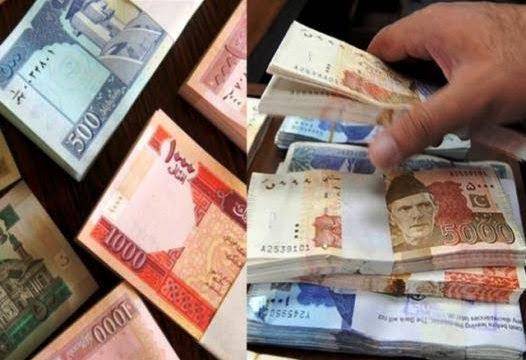How Afghan currency value is more than Pakistani Rupee? Interesting report by World Bank
Shares

While the Pakistani rupee grapples with a persistent struggle against the mighty US dollar, recently surpassing the daunting Rs300 benchmark, a neighboring nation paints a vastly contrasting economic landscape. According to a recent report by the World Bank, the Afghan Afghani, Afghanistan's native currency, has exhibited a remarkable surge in value when measured against most other global currencies, a phenomenon that has transpired since the initiation of the current fiscal year.
What sets the Afghan economy apart from the global norm is its peculiar experience of negative inflation or deflation, with overall inflation hovering at a staggering -9.1%, and food prices plummeting by a substantial 12%.
Despite these extraordinary economic conditions, the Afghan Afghani has managed to strengthen its position in comparison to stalwart currencies such as the US dollar, the Pakistani rupee, the Chinese Yuan, and the Euro.
The report attributes this remarkable Afghani resurgence to a confluence of factors. One of the pivotal drivers is the gradual increase in remittances from Afghan citizens living abroad, which tallied an impressive $1.04 billion during the initial six months of the year.
Moreover, the Afghan government's imposition of a comprehensive ban on conducting transactions within the country using foreign currencies has substantially diminished the demand for such currencies, preventing their manipulation through trade.
Further bolstering the currency's resilience is the Afghan Taliban government's strategic implementation of transaction limits, effectively capping the amount individuals and businesses can withdraw from banks.
These limits, initially set at AFN 30,000, were raised to AFN 50,000 for individuals and saw an even greater adjustment for companies, raising their limit from AFN 2.5 million to AFN 4 million. By confining transactions within these boundaries, the government successfully encouraged more capital to remain within the banking system, thereby contributing to economic stability.
Lastly, the report underscores the absence of a parallel currency system in Afghanistan's foreign exchange market, describing it as 'balanced.' This equilibrium ensures that the Afghani maintains a stable and uniform exchange rate across the country, free from the perils of hoarding or black market activities. This unique environment adds yet another dimension to the Afghan Afghani's remarkable ascent against the backdrop of a complex and challenging economic landscape
